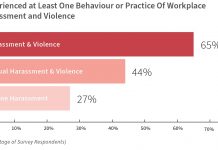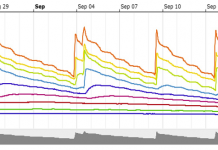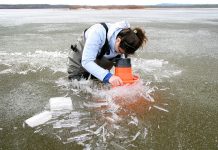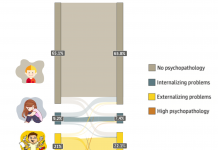Open Access Government produces compelling and informative news, publications, eBooks, and academic research articles for the public and private sector looking at health, diseases & conditions, workplace, research & innovation, digital transformation, government policy, environment, agriculture, energy, transport and more.
Home Search
en - search results
If you're not happy with the results, please do another search
Confronting harassment and violence in Canadian workplaces: Insights and evolutions
Dr. Adriana Berlingieri, Research Associate and Barb MacQuarrie, Community Director at the Centre for Research & Education on Violence Against Women & Children in Canada, discuss the prevalence and impact of harassment and violence in the workplace.
Barb MacQuarrie – Centre for Research & Education on Violence Against Women & Children
Barb MacQuarrie, the Community Director at Western University's Centre for Research and Education on Violence against Women & Children, specializes in research and education...
Dr. Adriana Berlingieri – Centre for Research & Education on Violence Against Women &...
Dr. Berlingieri is an organizational consultant, facilitator, and researcher. Her professional and scholarly interests are centered on harassment and violence at work. Dr. Berlingieri...
Improving vineyard irrigation efficiency with soil water sensors
Using soil water sensors to automatically schedule irrigation in winegrape vineyards offers the potential for growers to enhance water use productivity under warmer climate conditions.
Interact fostering polar science and research in the arctic
Margareta Johansson and Terry V. Callaghan CMG, on behalf of INTERACT friends, walk us through a series of EU projects that foster polar science and research in the Arctic.
Why mobile device management security is a must for the public sector
Learn why Mobile Device Management security is crucial for government organizations, ensuring strong protection and smooth device operations. Find out why it matters and get crucial insights for a secure mobile device setup.
Competency and skill: Is there really a difference?
Bobbie King, CEO and Co-Founder of SQEPtech, uncovers competency and skill and asks if there is really a difference between the two.
Understanding the NHS staffing crisis and challenges faced by migrant care workers
Avinav Nigam, Founder of Tern Group, discusses the NHS staffing crisis and why, in addressing this challenge, policymakers must consider the interplay between migration policies, societal challenges, and the healthcare sector’s needs.
Workers need protecting from violence and harassment
Aaron Gardner, Data Visualisation and Insight Scientist at Lloyd’s Register Foundation, looks at what we can learn and the steps governments can take to start improving worker safety.
The long shadow of childhood mental health problems
Dr Niamh Dooley and Professor Mary Cannon explore what young adult life looks like for individuals who had mental health problems as children.
Microbe development for the biomanufacturing age
Joe Price, Dr Kang Lan Tee & Prof Tuck Seng Wong, explore adopting a holistic approach to microbe development for the age of biomanufacturing.
The Royal Ottawa Health Care Group: Promoting mental health and wellbeing
The Royal Ottawa Health Care Group (The Royal) is one of Canada’s foremost mental health care, teaching, and research hospitals. Our mission is to transform the lives of people living with complex and treatment-resistant mental health and substance use needs through client and family-centred care and research.
Bridging the gap between evidence and action for a healthy society: The power of...
This is the third article in a series published by Open Access Journal that addresses the gap between evidence and action in health promotion.
Qvantum Energi ABL: Providing innovative heating designs
Examining Qvantum, the fast-growing innovative company that has developed and produced high-quality heat pumps and energy systems since 1993.
Would you trust AI to predict your future life events?
Artificial intelligence (AI) model, life2vec, is capable of predicting life events, including estimating the time of death, by analysing health data.
The challenges and opportunities through the eyes of tomorrow’s doctors and nurses
Elsevier Health's Clinician of the Future 2023: Education Edition, the third instalment in the program, unveils insights from over 2000 medical and nursing students, shedding light on their perspectives, challenges, and aspirations.
Brain infection by SARS-CoV-2: Lifelong consequences
The WATCH team, founded to elucidate the role played by specialized brain cells called tanycytes in various physiological processes, has been investigating how and where the SARS-CoV-2 virus infects the brain, and some long-term consequences of this neuro-invasion.
Paleobiology: Unveiling ancient African ecosystems with Artificial Intelligence
Artificial intelligence has emerged as a powerful tool in paleobiology and archaeology.




















